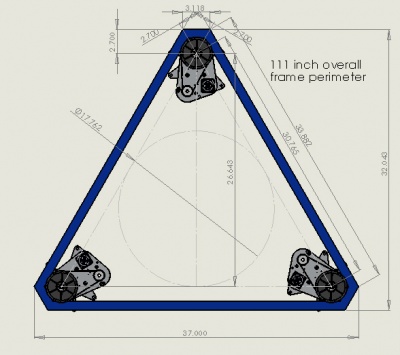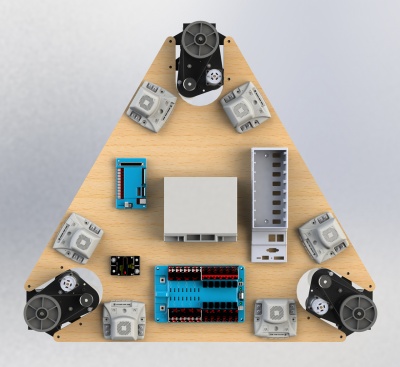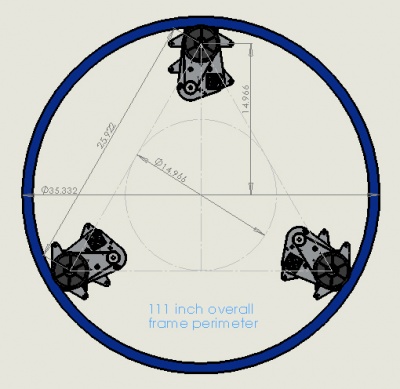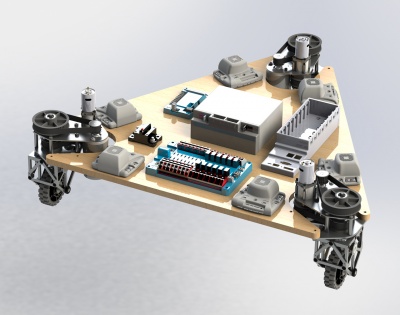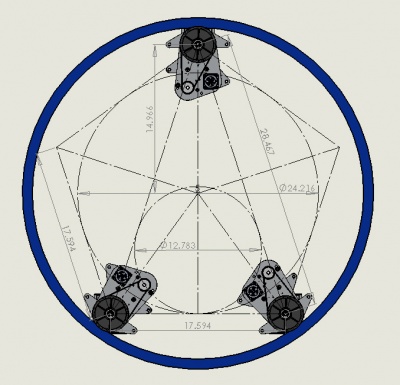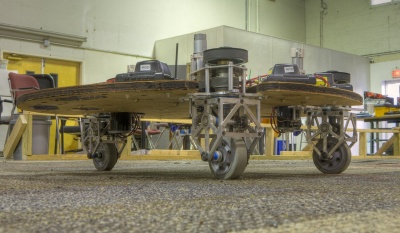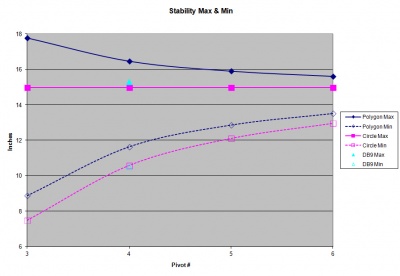3-Wheel Swerve
The 2013 change in perimeter rules (112 in overall perimeter vis-à-vis 28in x 38 in) open new potentials for non-rectangular robots. The team decided to explore this.
In particular, the new rules enable the design of a 3-wheeled robot without paying as large a penalty in terms of reduced stability. Potential benefits of a 3-wheeled drive-train are reduced drive-train and chassis weight, and/or a drive-train with enhanced features (which might otherwise been impractical due to drive-train weight). Additionally, a 3-wheeled swerve robot reduce burden on the cRIO. A tiangular chassis robot may be able to break a blockage by opposing robots more easily than a rectangular chassis robot due to the reduced corner angle.
Chassis stability is measured by the outer perimeter of the pivot axes (or casters, if these replace pivots). If the acceleration and incline adjusted projection of the robot's center of mass remains in this perimeter, the robot remains upright; but if that projection falls outside this perimeter, the robot can tip over. When stationary & level, this projection of the center of mass is straight down (gravity being the other acceleration at work). The same is true when the robot is moving at a constant velocity (with velocity being a vector; comprising both speed and direction). Inclining the robot (such as on a ramp), does not change the direction of the projection, but the incline does move the projected point on the field surface. Acceleration (which includes stopping and direction changes) shifts the direction of the projection (the gravitational and negative acceleration vectors are added).
Naturally, chassis stability is angle dependent.
Chassis stability was assessed for chassis with 3, 4, 5 & 6 pivots on a regular polygonal pattern. Pivot axes were 2.7 inches from the frame perimeter (to allow pivot rotation). Chassis perimeters were constant at 111 inches (versus 112 inch 2013 rule maximum). Polygon apexes were truncated to the 2.7" tangent from the pivot axes. The stability of both polygonal and round chassis were determined. DEWBOT IX was included in the analysis as a reference.
